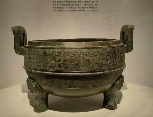Significant Jade Sculpture Discovery in Xuzhou, China

In a significant breakthrough for archaeological research, archaeologists in Xuzhou, China, have recently discovered a collection of exquisite jade sculptures, offering unprecedented insights into the ancient Chinese civilization. This monumental find, announced by a team from Tongji University (Tongji University website), marks a pivotal step in understanding the cultural and technological advancements of ancient China.
The discovery took place during routine excavations at a well-preserved ancient tomb site in Xuzhou. The jade sculptures, meticulously crafted with intricate designs and patterns, are believed to be over 2,500 years old. These artifacts provide valuable clues about the artistic techniques and symbolic significance of jade carvings in the region. Dr. Li Chen, a prominent archaeologist from Tongji University, emphasized the importance of the discovery:
"These jade sculptures represent some of the most sophisticated examples of ancient craftsmanship ever found in this part of China. They offer a window into the lives and beliefs of our ancestors and could potentially rewrite parts of Chinese history."
The excavation team is currently conducting further analysis to uncover more details about the provenance, usage, and historical context of these sculptures. Preliminary radiocarbon dating suggests that the objects were created during the Warring States period, a tumultuous era known for significant social, political, and cultural changes.
Dr. Chen also highlighted ongoing efforts to preserve and study the sculptures: "The preservation of such ancient artifacts is critical for ensuring that future generations can appreciate and learn from them. Our team is working tirelessly to document every aspect of these sculptures and understand their broader significance."
 LongStory.Asia The Digital Archaeological Portal
LongStory.Asia The Digital Archaeological Portal